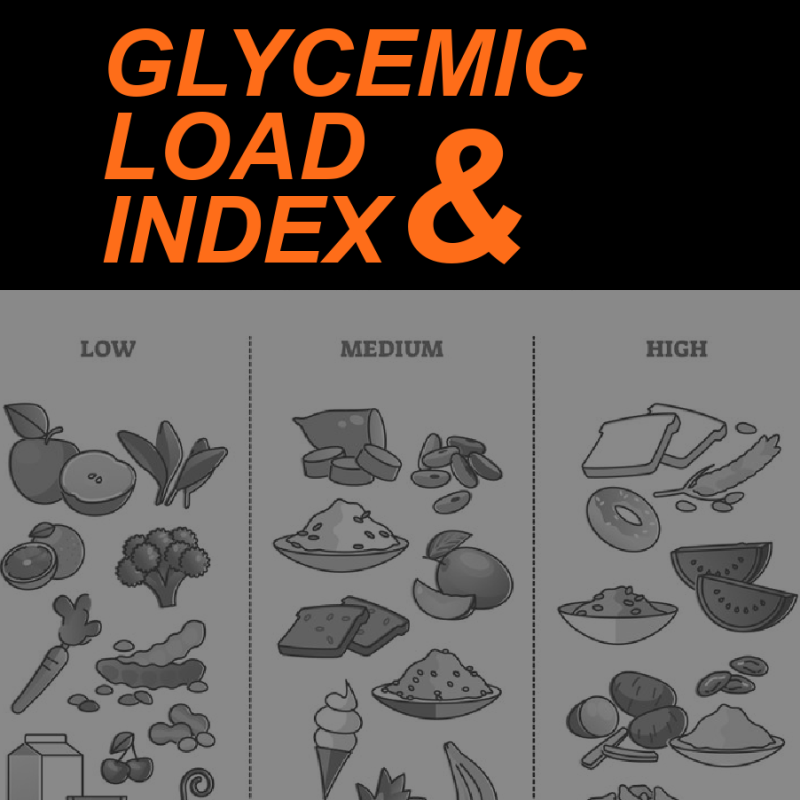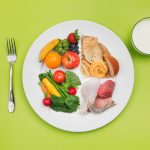
Food consumed as fuel for life’s demanding activities not only provides energy, but also has a direct effect on circulating blood glucose levels. Understanding a food’s glycemic index and glycemic load–two different terms–helps us aid personal training clients in strategizing the most beneficial meal plan for their needs.
The Origins of the Glycemic Index
The glycemic index (GI) concept was originally introduced to examine different sources of carbohydrate-rich foods and their effect on post-meal blood sugar levels. This concept provided a reliable and useful system of classifying carbohydrate-containing foods according to how fast they are digested and absorbed during the 2-hour period following consumption.
Low-GI foods typically get broken down slowly, whereas high-GI foods provide a more rapid fuel, resulting in different glycemic responses. In general, low GI foods include most fruits and vegetables, beans and legumes, and whole-grain products. Refined grain products and potatoes have a higher GI.
The Carb-Colon Connection
The concept of a food source’s effects on the body’s insulin response has been studied intensively, yet scientists agree on the necessity of more research in order for a full picture to emerge. One study attempted to determine the possible differences in glycemic index (GI) based upon either the “available” or “unavailable carbohydrate” load.
This selection separates carbs based upon their content of simple/complex, sugars/starches, and available/unavailable carbohydrates. Available carbohydrates in a food exclude indigestible carbohydrates, commonly referred to as dietary fiber. Unavailable carb sources incorporate the quantity of total starch minus resistant starch.
Starchy foods that lead to a relatively flat glycemic response include legumes, barley/bulgur/rice/pasta, and whole-grain breads, especially pumpernickel. Adding these foods into a regular meal plan helps to reduce blood glucose, insulin and lipid levels. The addition of fiber almost always lowers the glycemic response even for foods with a high GI; these results could prove useful as a strategy for crafting meal plans, particularly for diabetics.
The large intestine or colon bears the responsibility of breaking down foods that we consume. As soon as contents of the small intestine pass into the colon, millions of bacteria begin a fermentation process to break down the carbohydrates. Carbohydrate fermentation benefits the host: the bacteria acquire energy while simultaneously releasing necessary short-chain fatty acids. Since the higher fiber content of low GI food sources lessens/slows their digestibility, more of the carbohydrate can enter the colon, thereby increasing both colonic fermentation and short-chain fatty acid production.
Glucose and ATP
Our bodies utilize glucose, the product of carbohydrate breakdown, to manufacture ATP (Adenosine Triphosphate), the preferred energy fuel. Therefore, nutrition experts recommend consuming predominantly medium-to-low GI complex carbs throughout the day in order to sustain energy levels for peak performance of daily functions. Simple carbohydrates such as fruit, which ranks higher on the GI scale, serve the body well at times when depleted liver glycogen needs replenishing, either upon waking in the morning or immediately following a workout.
Glycemic Load Lends Clarity
The closely related concept of glycemic load (GL) accounts for the amount of carbohydrates in a food serving. The GL provides a more accurate picture of a food’s impact on circulating blood sugar levels. “The glycemic index ranks foods based on how quickly they’re digested and raise blood glucose levels,” says Sandra Meyerowitz, MPH, RD, owner of Nutrition Works in Louisville, Kentucky. “It’s glycemic load that takes into consideration every component of the food as a whole, so it’s a different number. It changes everything,” she adds.
Some dietitians and physicians believe that individuals living with the challenges of diabetes might find both the GI and the GL of foods helpful in avoiding spikes and crashes of blood sugar levels. Scientists at the University of Sydney, the first to present the idea of glycemic load, have developed a formula for determining the glycemic load of a food: multiply the GI of the food by the grams of available carbohydrates in a serving of the food, then divide this total by 100.
We can use an apple as an example, a food with a glycemic index of 40 and containing 15 grams of available carbohydrates. Glycemic load =40 x 15 divided by 100, or 6. Such a low GL would deem apples a safe snack during the day for individuals tracking their blood sugar. In sharp contrast, consuming a single serving of white potatoes, packing a GI of 102 and 37 grams of available carbs, nets a GL of 38.
Calculations get muddled a bit for a food such as watermelon. While its GI ranks high, a serving contains relatively few grams of available carbs. Therefore, even with a high glycemic index, the glycemic load remains low.
Worth the Work?
Although clients often seek our opinions on the most appropriate foods to choose either before or immediately following exercise, the majority may not wish to devote the time necessary to tackle these mathematical equations. However, similar to the workouts themselves, understanding the complexity of GI /GL and choosing the best meals for effective fuel requires a willingness on the part of the client to ensure he derives the most out of the investment he chose to make for better health and an improved physique.
Once we have a firm grasp on these concepts, we can better serve our clients by providing a more complete program for achieving their goals. Timing of nutrient intake, the nutrients themselves, and the effects they have on blood sugar and insulin release all contribute to a more successful body transformation.
References
pubmed.ncbi.nlm.nih.gov/21567757/
pubmed.ncbi.nlm.nih.gov/2180214/
pubmed.ncbi.nlm.nih.gov/17992183/
pubmed.ncbi.nlm.nih.gov/17036507/
pubmed.ncbi.nlm.nih.gov/16205745/
pubmed.ncbi.nlm.nih.gov/16523203/
ciencenorway.no/forskningno-irritable-bowel-syndrome-norway/large-intestine-may-be-source-of-woes-for-people-with-irritable-bowel-syndrome/1455332
pubmed.ncbi.nlm.nih.gov/16600933/
.cambridge.org/core/journals/nutrition-research-reviews/article/glycaemic-index-methodology/4AEE3FFEBBA327530129C2381907D4F2
www.fao.org/3/w8079E/w8079e0a.htm
www.health.harvard.edu/diseases-and-conditions/the-lowdown-on-glycemic-index-and-glycemic-load
www.sciencedirect.com/topics/medicine-and-dentistry/glycemic-load
lpi.oregonstate.edu/mic/food-beverages/glycemic-index-glycemic-load
www.labrada.com/blog/diets-nutrition/glycemic-index-the-importance-of-the-glycemic-index-in-a-bodybuilding-diet/
www.everydayhealth.com/diet-nutrition/101/nutrition-basics/the-glycemic-load.aspx
pubmed.ncbi.nlm.nih.gov/22468341/
www.ncbi.nlm.nih.gov/pmc/articles/PMC2728618/







